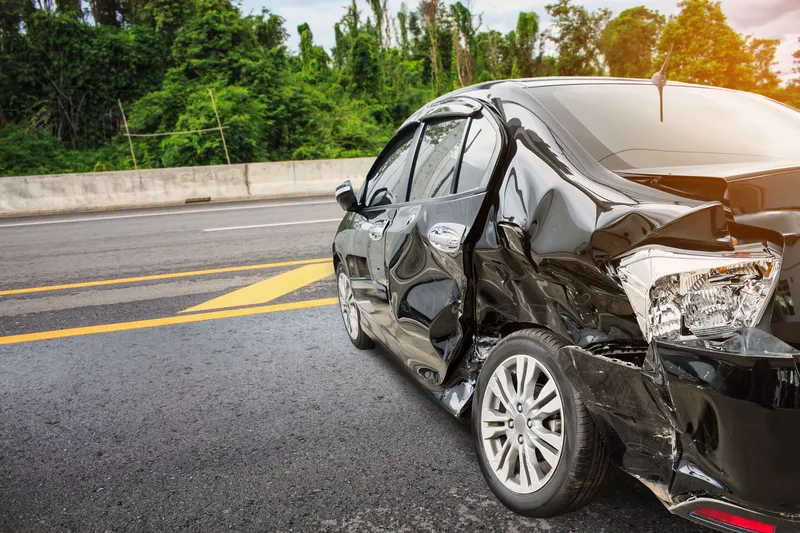Red-light safety cameras installed by American Traffic Solutions (ATS) turned in another year of positive results at intersections in New Jersey, and trends show "driver behaviour is being modified," according to the recently issued New Jersey Department of Transportation's (NJDOT) third annual analysis of the photo enforcement program. According to the report, "Further sustained analysis is needed and the Department recommends that the traffic control signal monitoring systems pilot program continue."
April 1, 2014
Read time: 3 mins
Red-light safety cameras installed by 17 American Traffic Solutions (ATS) turned in another year of positive results at intersections in New Jersey, and trends show "driver behaviour is being modified," according to the recently issued 7104 New Jersey Department of Transportation's (NJDOT) third annual analysis of the photo enforcement program. According to the report, "Further sustained analysis is needed and the Department recommends that the traffic control signal monitoring systems pilot program continue."
The pilot program officially began on 16 December 2009 and will end in December 2014. This third annual report describes the pilot program and analyses the safety data for all authorised monitoring systems where violations have been issued for at least one year for the period ending 31 December 2012. Key findings in the report include:
For the two locations with three years of data, when the pre-camera year crash data is compared to year three, right-angle crashes are down 86 per cent, rear-end crashes are down 58 per cent, total crashes are down 72 per cent, and estimated crash severity costs have been reduced by US$246,200. Citations issued at these locations are down 83 per cent, comparing the first month of operation with month 36, the last month at the end of the three year period.
Looking at the crash, severity and citation data, both annually and over the three year period the report concludes that the red light running (RLR) system has made a difference and therefore appears to be a viable safety tool at these Group 1 intersections.
For the twenty-two locations that have been active for two full years, when the pre-camera year data is compared to year two, right-angle crashes are down 60 per cent, rear-end crashes are down seven per cent, total crashes are down 27 per cent, and estimated crash severity costs have been reduced by US$787,200. Citations issued at these locations, comparing month 1 of operation with month 24, citations are down 61 per cent.
For the twenty-three intersections that have been operating for one full year, when the pre-camera year is compared to year 1, right-angle crashes are down 15 per cent, rear-end crashes are down three per cent, total crashes are down five per cent, and estimated crash severity costs have decreased by US$2,176,100. Comparing month one with month twelve, citations issued at these locations are down 31 per cent.
Adding the severity costs for each operational year, right-angle crash costs at all RLR intersections have decreased US$1,519,500 and rear-end crash costs have decreased US$1,690,000, resulting in a combined net public benefit of US$3,209,500 for the program up to 31 December 2012.
“Just as New Jersey’s first and second annual reports on red light safety cameras found, this latest analysis shows red light safety cameras are enhancing safety in Jew Jersey,” said Adam Tuton, president of ATS. “The data proves that the longer the programs are in existence, the better the public safety results.”
The pilot program officially began on 16 December 2009 and will end in December 2014. This third annual report describes the pilot program and analyses the safety data for all authorised monitoring systems where violations have been issued for at least one year for the period ending 31 December 2012. Key findings in the report include:
For the two locations with three years of data, when the pre-camera year crash data is compared to year three, right-angle crashes are down 86 per cent, rear-end crashes are down 58 per cent, total crashes are down 72 per cent, and estimated crash severity costs have been reduced by US$246,200. Citations issued at these locations are down 83 per cent, comparing the first month of operation with month 36, the last month at the end of the three year period.
Looking at the crash, severity and citation data, both annually and over the three year period the report concludes that the red light running (RLR) system has made a difference and therefore appears to be a viable safety tool at these Group 1 intersections.
For the twenty-two locations that have been active for two full years, when the pre-camera year data is compared to year two, right-angle crashes are down 60 per cent, rear-end crashes are down seven per cent, total crashes are down 27 per cent, and estimated crash severity costs have been reduced by US$787,200. Citations issued at these locations, comparing month 1 of operation with month 24, citations are down 61 per cent.
For the twenty-three intersections that have been operating for one full year, when the pre-camera year is compared to year 1, right-angle crashes are down 15 per cent, rear-end crashes are down three per cent, total crashes are down five per cent, and estimated crash severity costs have decreased by US$2,176,100. Comparing month one with month twelve, citations issued at these locations are down 31 per cent.
Adding the severity costs for each operational year, right-angle crash costs at all RLR intersections have decreased US$1,519,500 and rear-end crash costs have decreased US$1,690,000, resulting in a combined net public benefit of US$3,209,500 for the program up to 31 December 2012.
“Just as New Jersey’s first and second annual reports on red light safety cameras found, this latest analysis shows red light safety cameras are enhancing safety in Jew Jersey,” said Adam Tuton, president of ATS. “The data proves that the longer the programs are in existence, the better the public safety results.”








